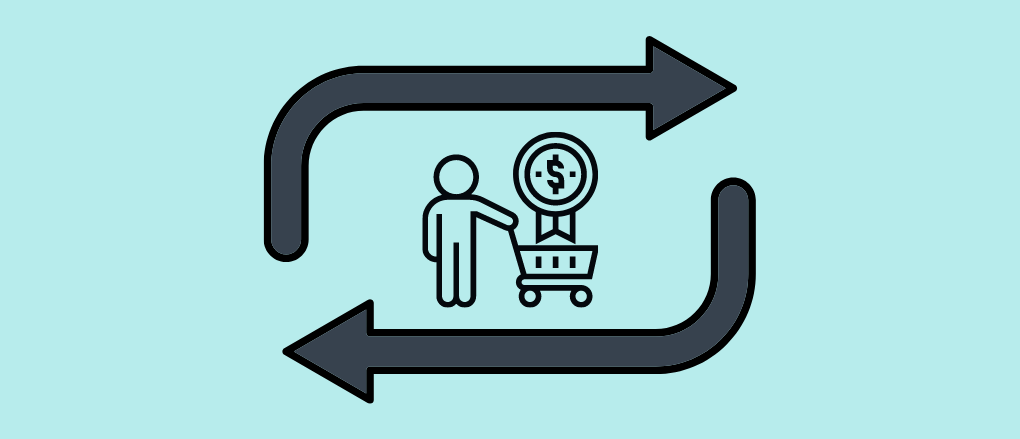Customers are the lifeblood of any business.
And eCommerce stores are no exception to this. In fact, providing an excellent customer experience is one of the critical factors in any stores’ success.
If you want to generate sales and keep the crowd coming back for more, you’ll need to develop an experience that not only meets your competition, but exceeds it.
Today, we’re going to help you do just that.
Without further ado, let’s get into it.
Why is the eCommerce Customer Experience so Critical?
First, let’s talk a bit about why the customer experience matters so much in the first place. We often see store owners share a common belief:
“If our product beats the competition’s, consumers will take notice.”
We’d love for that to be the case, but it’s far from the truth.
To illustrate why, let’s look at an example.
If you’d rather skip the background, now’s the time to head straight to step one; otherwise — read on.
Netflix vs. Blockbuster

By today we’re all familiar with the internet giant known as Netflix.
For a long stretch, they went unmatched as the main source of at-home movies for consumers, but it wasn’t always that way.
Before 2014, Blockbuster was one of Netflix’s biggest competitors.
After 2014, Blockbuster had been reduced to one single store within the US, compared to the 9000 stores that ran at the company’s peak.
The reason that Netflix ended up the victor and Blockbuster ended up bankrupt?
While it could be broken down into smaller parts, the reason came down to a few massive factors— one of the most significant being customer experience.
Even before Netflix streamed movies straight to your screen over the web, they sent movies straight to consumers’ houses.
You could keep the disc as long as you wanted and send it back when you were ready.
All without leaving your home.
Compare that with the competition. To rent a movie from Blockbuster, you’d have to drive to a location, pick the movie from the store and then pay for each rental individually.
Then you’d have to avoid the late fees. (A policy they ended in response to Netflix’s lack of late fees, by the way)
Netflix survived while Blockbuster didn’t because they offered a smoother, more seamless customer experience, and they continue to offer one today – keeping up with competitors like Hulu and Disney+.
If there’s something to learn from Blockbuster’s untimely demise, it’s that a company that stops innovating for consumers’ sake is one that gets left in the dust.
For those who’d rather be a Netflix than a Blockbuster, following the advice in the rest of this article should be a great start.
How to Build a Top-Notch eCommerce Customer Experience in 3 Steps
Now for the part we’ve all been waiting for, building an excellent customer experience.
We’ll cover the process in three (relatively) simple steps.
Step 1: Craft a Pre-Purchase Experience that Builds Trust
One of the most significant benefits of a great customer experience is that it builds trust with your potential customers.
And, in turn, this trust nudges those potential customers towards the sale.
This is why your site should be well-polished from the moment a visitor lands on your home page.
A well-designed site is composed of a few main pieces, including (but not limited to) the following:
- An intuitive structure that keeps visitors on-page longer
- Fast site loading times
- Mobile optimization
Developing an Intuitive Site Structure
A site structure (also known as a sitemap,) that makes sense to users will go a long way in improving customer experience.
The harder it is to navigate your website, the more frustrated users will get — which means a higher bounce rate and fewer sales.
Another huge benefit of creating an organized sitemap is that it’ll help your store appear on search engines, which is a great way to boost sales further.
Luckily, structuring your website isn’t as complicated as it may seem. You can do a lot to keep customers engaged with just a few simple rules.
- Pages should be grouped in categories that make sense. (i.e., blog posts all belong in the blog section, items from the same niche are put in the same store section, etc.)
- No page on your site should take more than 2 clicks to reach. (maintaining a shallow sitemap ensures that no pages are too inaccessible)
- Create a header with easy-to-navigate buttons between sections of your website (not only should each page be accessible within 2 clicks, but your main ones should always be accessible through the top-of-page)
A Quick Word on Page Speed
Page speed is one of the most important factors for any website.
Why’s that?
As a page’s loading speed goes from 1 to 10 seconds, the probability of a visitor bouncing increases by 123%.
Think With Google
Which is to say, a website that doesn’t load quickly is one that won’t keep visitors for very long.
You can keep your store’s page speed down by compressing images, limiting plugins to what’s necessary, and hosting it on a reliable platform like Shopify or Wix.
And to make your task even easier, Google provides a handy (and free!) tool to help you check whether your website is fast enough.

Just plug your website into the URL field, and Google will tell you if it’s up to par; it’ll also give recommendations on how to improve the speed too.
Create an Experience Optimized for Mobile Platforms
Over half of all traffic on the web comes from mobile.
And 79% of users say they’re more likely to revisit or share a mobile website that’s easy to use.
Which means it’s essential to not only make sure your site loads fast but that it works well on phones too.
Mobile optimization isn’t all too different from page speed optimization though; you’ll just have to make sure that your image sizes and store pages fit well on smaller screens.
Luckily most platforms like Shopify will automatically do much of that work for you, and Google has yet another free tool to help you check for mobile-friendliness.

The tool works much in the same way that the last one does; just plug in your link and follow any recommendations that Google gives to help your site work well on mobile devices.
Step 2: Tailor Your Mid-Purchase Experience
Now, if you’ve followed along up until this point, it shouldn’t be long until you see more sales come rolling in.
And that’s great! But our job isn’t over yet.
To see the best results, great customer experiences extend into the purchasing process, and after it too.
One of the best ways to do just that is by providing a seamless purchase experience and relevant product recommendations.
Providing Relevant Recommendations to Customers
Upselling related products to customers is a great way to increase the value for both parties, but it’s also a tactic that often gets taken overboard.
For a shining example of a mid-purchase customer experience, let’s take a look at how Tushy upsells customers using a pop-up.

As you can see, the recommendations are related, not too pushy, and unintrusive.
Implementing a similar approach for your own store will help both you and your customers get the most out of each interaction.
But the customer experience doesn’t just end there; the post-purchase ecommerce customer experience is critical for long-term success too.
Step 3: The Follow-Through (How the Post-Purchase Affects the eCommerce Customer Experience)
The way your business interacts with customers after the sale is what makes the difference between one-time buyers and loyal customers that keep coming back.
Here’s how you can create a brand that generates consistent, long-term return business.
Provide Top-Notch Customer Support
Customer support is one of the most defining factors of a brand that consumers can trust.
Getting in contact with your support section should be simple, straightforward, and as hassle-free as possible for your customers.
And luckily, it’s as easy as ever to implement customer support tools without coding experience or complicated onboarding processes.
One great way to do that is with EasyCall. (that’s us!)
EasyCall allows you to start a whole support call center for your store with just a few simple clicks.
It allows you to buy numbers from over 190 countries, take calls from customers in just a couple of clicks, and even offers a pay-as-you-go plan for businesses who want to test the waters first.
(psst, it also works on most major platforms like Shopify, Wix, and WordPress!)
But we’d rather you see the great results for yourself, so create a free account here to try it out today.
That said, great customer support doesn’t simply end with accepting live calls, so let’s get the the next tip.
Product Support – How Your Brand can Combat Buyer’s Remorse
Over 50% of consumers often feel buyer’s remorse after making a purchase.
Which means that even with the best product on offer, you’ll still have to deal with the effects of buyer’s remorse.
One of the best ways you can help customers through that initial phase is by offering product support in as many ways as possible.
Creating a live chat for your store, a dedicated help base, or writing a guide on how to get the most out of your product are all ways that you can ensure customers walk away satisfied with their purchase.
The Ecommerce Customer Experience is Key to Getting More Repeat Business
Repeat customers spend 33 percent more than new customers. And the average repeat customer spends 67 percent more in months 31-36 than customers in their first 6 months.
Which is why the most successful brands are the ones with the most loyal customers.
And the leading cause for lost customers?
82 percent of consumers in the US said they stopped doing business with a company due to a poor customer experience.
All of that is to say: the ecommerce customer experience should be at the front of your priority list.
So get out there and set up an experience that keeps the crowds coming back for more!
(And if you need more help creating that top-notch experience, check out our guide on how to keep customers happy)




